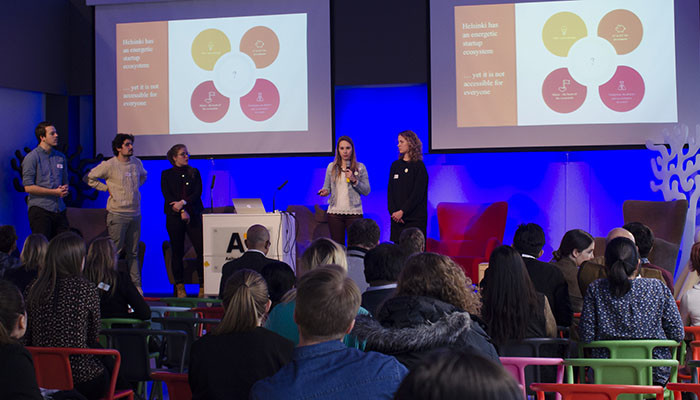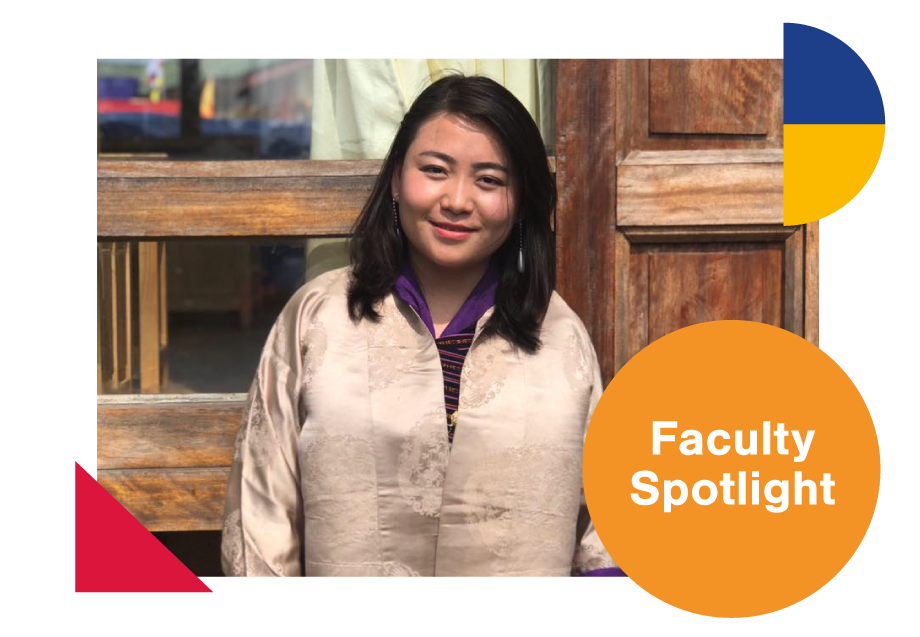SED 2017 focused on social sustainability and inclusion in collaboration with the City of Helsinki. Local election candidates also discussed their views.
Sustainable Entrepreneurship Day 2017, held on 31 March, highlighted the work of students on this year’s Sustainable Entrepreneurship course with a particular focus on social sustainability and inclusion.
‘Solving real-world challenges is a key focus of the Sustainable Entrepreneurship course, as well as the School of Business in general. So, this year’s course was designed in collaboration with the City of Helsinki, The Shortcut and ImpactIglu/Aalto Global Impact with a focus on challenges encountered by immigrants and asylum seekers in terms of social inclusion and entrepreneurship,’ explains Assistant Professor Ewald Kibler.
The City of Helsinki is very pleased with the results of its collaboration with the Sustainable Entrepreneurship course and aims to take make use of students’ findings in its new strategy.
‘Students produced interesting analysis and recommendations, both at policy and operational level,’ says Senior Planning Officer Anu Riila from the Helsinki Economic Department, Immigration and Employment services. ‘We are happy to collaborate with Aalto University also in the future to develop inclusive approaches that promote diversity and sustainability,’ says Riila.
Interest in entrepreneurship but obstacles in the way
The Sustainable Entrepreneurship course consisted of three tracks – research, consultancy and entrepreneurship – all of which addressed issues around sustainable entrepreneurship. Findings indicate that interest and courage to pursue entrepreneurship clearly exists among immigrants and asylum seekers, but there are significant obstacles in the way.
‘Although Helsinki has a vibrant start-up ecosystem it is not accessible for everyone because of language barriers and lack of information,’ says Kibler. ‘Knowledge-sharing and empowerment is needed to help people get going. This is also means better screening to find those persons with interest or experience in entrepreneurship.’
Differences in levels of education were also discussed and how limited education influences identity creation. High education of Finland can feel intimidating and make integration into society more difficult. For example, some of the asylum seekers interviewed felt that their lower level of education made them less trustworthy in the eyes of Finns.
‘Immigrants and asylum seekers have much potential to offer to Finnish entrepreneurship, but obstacles can destroy viable ideas,’ says Kibler. ‘We are delighted that the insights of the students on the Sustainable Entrepreneurship course will be taken into account by the City of Helsinki.’
Local election candidates debate Sustainable Helsinki 2030
The Sustainable Entrepreneurship Day ended with a panel discussion entitled Sustainable Helsinki 2030: Whose Business, What Needs to be Done? The panel consisted of local election candidates; Eva Biaudet (RKP), Dan Koivulaakso (Vasemmistoliitto), Laura Kolbe (Keskusta), Tuuli Kousa (Vihreät), Jenni Pajunen (Kokoomus), Antton Rönnholm (SDP), and Erlin Yang (Perussuomalaiset).
The social dimension of sustainability was emphasized in the panel discussion and the need to promote entrepreneurship as one way to ease integration into Finnish society. The idea that Helsinki should be the driving engine for sustainability in Finland received much support. However, concerns raised by students illustrated the difficulty of accessing jobs even in Helsinki and that there is much work to be done, in order to smoothen the path for social integration.
The live stream from the event was shared by YLE News on Facebook and about 120 participants attended the event held at the Aalto University Design Factory.
More information:
Ewald Kibler, Assistant Professor of Entrepreneurship
Aalto University School of Business
+358 40 353 8442
ewald.kibler@aalto.fi
http://www.aalto.fi/en/current/events/2017-03-17-005/
https://www.facebook.com/aaltosed
https://twitter.com/hashtag/AaltoSED
Photo: Aalto Creative Sustainability
This post was written by Roope Kiviranta



